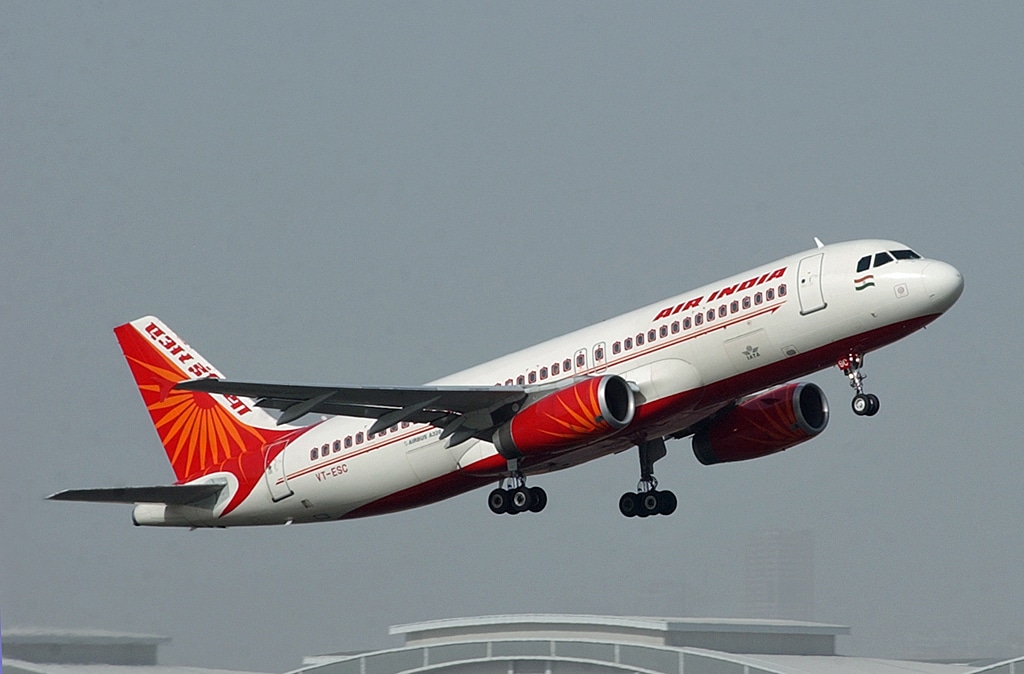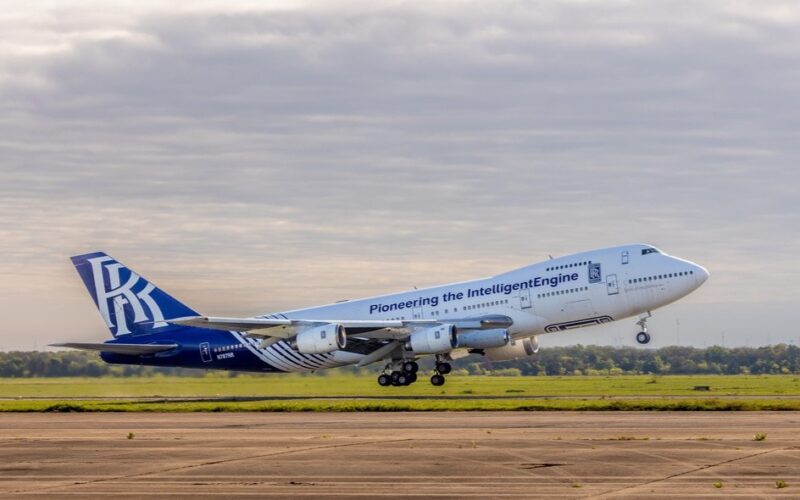Aerospace
How one announcement made by Air India captures global interest & The significance for aviation.

India’s position in the aviation industry has significantly changed. Huge planes have been ordered by Tata-owned Air India for its anticipated expansion of operations in the domestic and international markets. Significant orders in various areas will benefit the Indian sector in a variety of ways.
Employment Boost.
According to the most recent research, Air India creates a large number of jobs in addition to providing transportation services to India, likely throughout the world.
To operate the 470 planes that Air India will get in the next few years from Airbus and Boeing, the airline will require more than 6,500 pilots. In an effort to grow both its fleet and operations, the airline has put orders for the acquisition of 840 aircraft overall, with the option to buy an additional 370 aircraft. one of the biggest aircraft purchases made by a ship.
Although Air India now employs 1,600 pilots to operate its 113 aircraft, there have lately been instances where ultra-long distance flights have been canceled or delayed as a result of a staff shortage.
It can produce around 23500 workers for the grand total handling, and an additional 10,000 workers will be connected for direct employment with Air India.
Aerospace Boost
While Boeing and Airbus were previously waiting for orders, they currently have large orders that will take them five years to complete and deliver all the aircraft. Yet, the sector of aircraft production also generates employment for the USA, UK, and European regions. Also, Boeing received tremendous confidence in the B737 Max orders, which were underappreciated following the tragedy. Nevertheless, thanks to Air India’s order, Boeing is steadily regaining confidence in the aircraft.
Helping Tourism.
As everyone is aware, Air India consistently represents the national culture, and the TATA founder introduced it when it was first established.
In order to continue the tradition, Air India is also bringing a new level of attention to India, empowering the tourism industry, and facilitating simple access for various nations via a single window mode. The airlines are entirely focused on connecting people within their own countries.
Total orders.
According to the needs of its long-haul and short-haul flight operations, Air India has segmented its fleet of aircraft. For long-haul flights, it has specifically ordered the A350 and B777x, the newest aircraft that is best suited for passenger comfort and requires less maintenance. Also, some Airbus A321LRs, which are utilized for long-distance travel and have medium passenger seats, have been purchased.
Airbus
- 140 A320neo
- 70 A321neo
- 34 A350-1000
- 6 A350-900
Boeing
- 190 737 MAX (+50 options)
- 20 787 (+20 options)
- 10 777X
Strong aviation competition
Air India will be the greatest rival for local airline operators like Indigo, Spice Jet, Go Air, and Akasa, who may also feel pressure from the expansion of domestic airline operations.
With the help of Turkish Airlines, Indigo, which has a market share of more than 50%, has already begun to explore the global network. Terms of the air India brand, it will create international low-cost carriers.

Aerospace
China Secures Production Certificate for Mass Production of Pilotless eVTOL Aircraft

The first passenger-carrying pilotless electric vertical takeoff and landing (eVTOL) aircraft in the world, the EH216-S, has received the Production Certificate for its eVTOL aircraft from the Civil Aviation Administration of China (CAAC).
This is a significant milestone for EHang Holdings Limited, the leading UAM technology platform company in the world. This outstanding accomplishment is another big step towards mass manufacturing for the eVTOL aircraft and the ensuing commercial operations, building on the ground-breaking acquisition of the Type Certificate and the Standard Airworthiness Certificate for the EH216-S.
The PC is a crucial certificate that the aircraft maker receives from the CAAC, the country’s aviation authority. By obtaining this certificate, EHang has demonstrated that it has set up a quality management system for mass production that satisfies the airworthiness regulation standards set forth by the CAAC, and the company has been given permission to continue producing mass quantities.
It is also a strong guarantee of the calibre of the goods made by EHang. Raw materials, supplier management, manufacturing organisation, production quality control, aircraft pre-delivery test, after-sales repair and maintenance, etc. are all included in the mass production quality management system for the EH216-S.
To ensure that every aircraft and its components that roll off the production line strictly adhere to the approved type design and safety requirements, the system sets clear guidelines and documentation for every step in the production procedure. This ensures comprehensive traceability and safety control.
Aerospace
Four Airbus A380 Superjumbos lined up to be scrapped

In a strategic move aimed at reclaiming valuable resources from the iconic Airbus A380 aircraft, VAS Aero Services and Dr. Peters Group have announced a significant collaboration.
This partnership marks a milestone in aviation logistics and aftermarket services, with four of these colossal planes slated for teardown and redistribution of used serviceable material (USM).
The venture between VAS Aero Services, renowned for its expertise in aircraft dismantlement, and Dr. Peters Group, a prominent Germany-based investment fund management firm, underscores a commitment to sustainable aviation practices. This isn’t their first foray into scrapping A380s; their successful partnership has already seen the dismantlement of these aircraft, making them pioneers in this niche.
Under the agreement, the latest consignment brings the tally to eight A380s entrusted to VAS by Dr. Peters Group. Managing Director Christian Mailly of Dr. Peters Group emphasized the trust placed in VAS, citing their unparalleled capabilities in dismantlement and aftermarket sales network. It’s a strategic move in response to the growing demand for quality USM parts, particularly with the resurgence in reliance on the A380.
Notably, the teardown process will be carried out at various locations, optimizing the positioning of harvested parts to cater to different markets. While some parts will be positioned in Europe to support operators in the region and the Middle East, others will remain in the Asia-Pacific region. This meticulous strategy ensures efficient access to spare parts, benefiting MROs and airlines across these markets.
The decision to retire these A380s comes at a time when operators are reassessing fleet strategies amidst evolving market dynamics. Despite initial plans for quick retirement due to the emergence of more fuel-efficient alternatives, factors such as a rebound in long-haul demand and delays in new widebody deliveries have prompted operators to reconsider. The A380, with its unique capacity and capabilities, presents a practical solution for short-term capacity management.
Aerospace
Rolls-Royce Launches Test Flights for Revolutionary Pearl 10X Engine

Rolls-Royce reports that the company’s dedicated Boeing 747 flying testbed has seen the successful start of the Pearl 10X, their newest aero engine designed for the business aviation industry.
Dassault, a French aircraft manufacturer, has decided to use this engine only to power their newest flagship, the Falcon 10X. As stated at last year’s Capital Markets Day, the commencement of flight testing represents a significant milestone for both Rolls-Royce and the Pearl 10X programme as the company concentrates on expanding in the business aviation industry.
The first Rolls-Royce engine to power a Dassault business jet is the Pearl 10X, the newest engine in the state-of-the-art Pearl engine family. The Pearl 10X was chosen by the French aircraft manufacturer as their new flagship model, demonstrating even more of Rolls-Royce’s dominance in the business aviation engine market.
Over the next few months, pilots and flight test engineers from Tucson, Arizona, USA, will put the engine through its paces. The flight test programme will comprise testing of the nacelle’s anti-icing system, in-flight relights, engine performance and handling checks at various speeds and altitudes, and fan vibration tests at various altitudes.
The new auxiliary gearbox, which enables higher additional power extraction, and the ultra-low emissions ALM combustor, which is compatible with 100% Sustainable Aviation Fuel (SAF), have undergone extensive testing as part of the ground-based development programme thus far. The engine will be the most potent business aviation engine in the Rolls-Royce lineup. It exceeded its intended thrust levels during the very first test run. With over 2,300 testing hours successfully completed on the Pearl 10X engine configuration as well as the Advance 2 demonstration, the programme is moving forward at a rapid pace.
With the most economical engine core available for business aircraft, the Advance2 engine, coupled with a high-performance low-pressure system, gives the Pearl 10X an exceptional thrust of over 18,000 lbf. With a 5% increase in economy over the previous generation of Rolls-Royce commercial aviation engines, the Pearl 10X



























